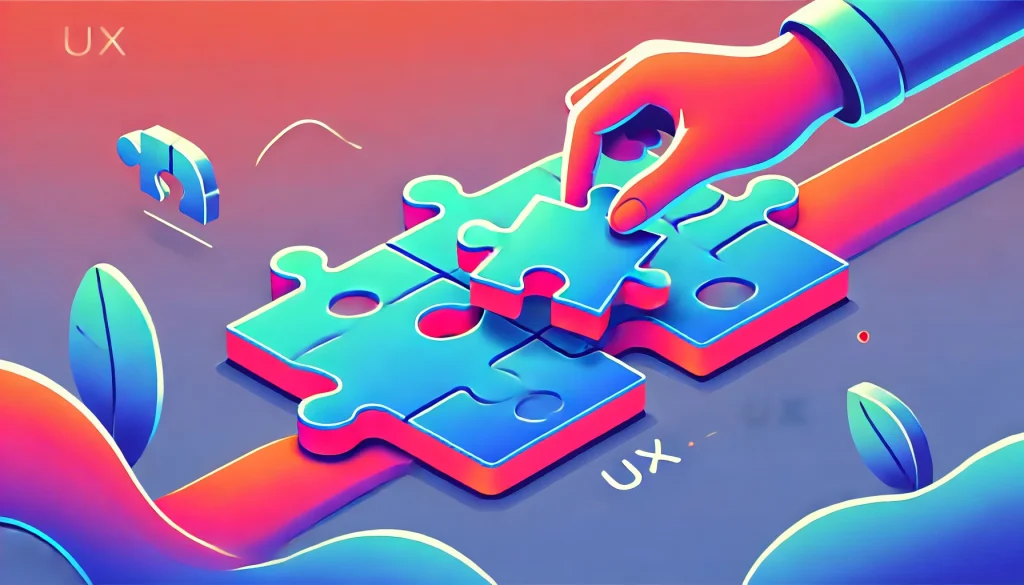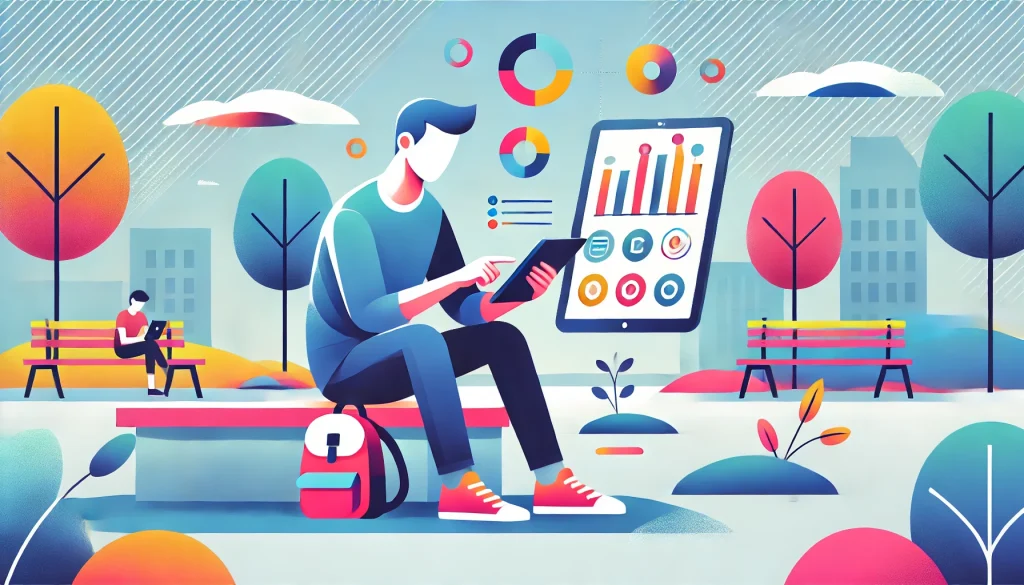
The EdTech space is evolving at a fast pace, driven by the demand for engaging, effective, and personalized learning experiences. As students and educators navigate through digital platforms, the role of User Experience (UX) design has become crucial in enhancing learning outcomes. One of the most transformative aspects of modern education technology is interactive learning, which places users—both students and educators—at the centre of the design process. By focusing on user-centric UX solutions, EdTech platforms are revolutionising the way learners interact with content, making education more engaging, accessible, and effective.
The Rise of Interactive Learning in EdTech
Interactive learning refers to dynamic and engaging educational experiences where learners actively participate in the learning process. Unlike traditional passive learning methods, interactive learning encourages users to engage with materials through simulations, games, quizzes, discussion forums, and real-time feedback. In fact, interactive learning has been shown to increase information retention rates by 60%, making it far more effective than traditional approaches.

Why Interactive Learning?
- Improves engagement: Students are more motivated when learning feels interactive and fun.
- Enhances retention: Active participation helps learners better retain information.
- Fosters collaboration: Group activities, online discussions, and real-time collaboration allow for enhanced peer-to-peer learning.
The Role of UX in EdTech

User experience is the backbone of any EdTech platform’s success. User-centric UX design in EdTech ensures that the platform is intuitive, easy to use, and meets the needs of its users. In interactive learning, a focus on UX can mean the difference between an effective learning tool and one that is quickly abandoned. Given the global EdTech market is expected to grow at a compound annual growth rate of 13.4% to reach USD 348.41 billion by 2030, the role of smooth, user-friendly design is only becoming more critical.
a. Personalised Learning Paths
Every learner is different. A UX solution that prioritises personalisation can adapt content to each learner’s pace, skill level, and interests. Through machine learning and AI-driven algorithms, interactive learning platforms can curate individualised paths, offering exercises, quizzes, and content based on previous performance and learning goals.

Example: Platforms like Duolingo and Khan Academy use UX to present tailored lesson plans, encouraging students to progress at their own pace and revisit concepts as needed. This personalization keeps learners engaged and motivated.
b. Gamification
Gamification is a powerful tool in EdTech, turning learning into an interactive game. By incorporating features like points, badges, and leaderboards, learners are motivated to achieve their goals. UX design plays a key role in creating a seamless and enjoyable gamified experience. For instance, platforms with gamified learning have reported up to a 50% improvement in student productivity, making gamification a game-changer for both motivation and learning success.

UX Benefits:
- Gamification ensures that users receive constant feedback, reinforcing learning.
- It keeps the learning process fun and goal-oriented.
- Achievements provide learners with a sense of accomplishment, promoting long-term engagement.
Example: Coursera uses gamification techniques like quizzes, checkpoints, and certificates to encourage learners to complete courses. Its easy-to-use interface, combined with these interactive elements, enhances the overall learning experience.
c. Mobile-First Learning Experiences
In a world where mobile learning is becoming more popular, designing for mobile-first is essential. A well-designed, responsive UX allows learners to access educational content on the go, seamlessly transitioning between devices. With over 70% of learners feeling more motivated when learning on mobile devices, mobile-first UX design is crucial for enhancing the learning experience and driving user engagement.

Key UX Features:
- Simplified navigation for smaller screens.
- Minimalistic, clutter-free designs that focus on the core learning experience.
- Interactive features that are touch-friendly, such as swipeable flashcards and tap-to-zoom diagrams.
Example: Quizlet, a flashcard-based learning platform, offers an exceptional mobile UX, allowing users to study on their phones or tablets while maintaining the same interactive features as the desktop version.
UX Design Principles for Interactive Learning Platforms
A few critical UX design principles stand out when it comes to developing successful interactive learning platforms:

- Intuitive Navigation
Learners, especially younger students, need to easily understand how to navigate through a platform. Simple, clear layouts with minimal distractions ensure that users focus on the learning content, not on figuring out how to use the tool.
- Visual Hierarchy
By using a visual hierarchy, important content can be highlighted, guiding learners through lessons, quizzes, or tasks. Interactive elements like clickable buttons, pop-up notifications, and progress trackers should stand out to help users stay on course.
- Feedback Loops
Real-time feedback is essential in interactive learning. Whether it’s through quizzes, assignments, or practice exams, providing immediate, clear, and constructive feedback helps learners stay engaged and improves their understanding of the material.
- Accessibility
A user-centric approach in EdTech must consider diverse learners, including those with disabilities. Designing for accessibility ensures that everyone, regardless of physical or cognitive abilities, can benefit from interactive learning.
The Impact of AI and Data-Driven UX in EdTech
Artificial Intelligence (AI) and data analytics are enhancing UX in EdTech by providing insights into user behaviour and learning patterns. AI-powered adaptive learning systems are set to grow by 43.8% CAGR by 2027, transforming personalised learning experiences. These technologies allow for more advanced personalisation and adaptation of interactive learning experiences.

- Adaptive Learning: AI algorithms track a learner’s performance, identifying areas where they need more help and adjusting content in real time. This creates a highly interactive and personalised learning experience, where learners receive targeted exercises that help them overcome specific challenges.
- Predictive Analytics: Data-driven UX design can anticipate user needs based on past interactions. For example, if a student struggles with a particular concept, the platform can predict future difficulties and provide additional resources or interactive exercises to reinforce understanding.
Future Trends: Virtual and Augmented Reality in Interactive Learning
Virtual Reality (VR) and Augmented Reality (AR) are emerging trends in EdTech, offering immersive, interactive experiences that are set to transform education.

- Virtual Reality: In subjects like history or science, VR allows learners to “visit” historical sites or explore molecular structures in 3D, making learning highly interactive and visually immersive.
- Augmented Reality: AR can enhance textbooks and other static materials by overlaying additional information or interactive elements, creating a more dynamic learning experience.
Example: Platforms like Nearpod are already integrating AR and VR to bring abstract concepts to life, providing learners with a more engaging and interactive experience.
Conclusion
Interactive learning is reshaping the EdTech industry, driven by a user-centric UX approach that prioritises engagement, personalisation, and accessibility. From gamified platforms to AI-driven adaptive learning, the future of education is interactive, and UX design plays a pivotal role in ensuring that learning experiences are not only effective but also enjoyable. As technology continues to evolve, the potential for innovation in EdTech is limitless, with user-centric UX solutions leading the way.
Also Read: Future of Education: How Innovative UX Designs Transform Learning Experiences







